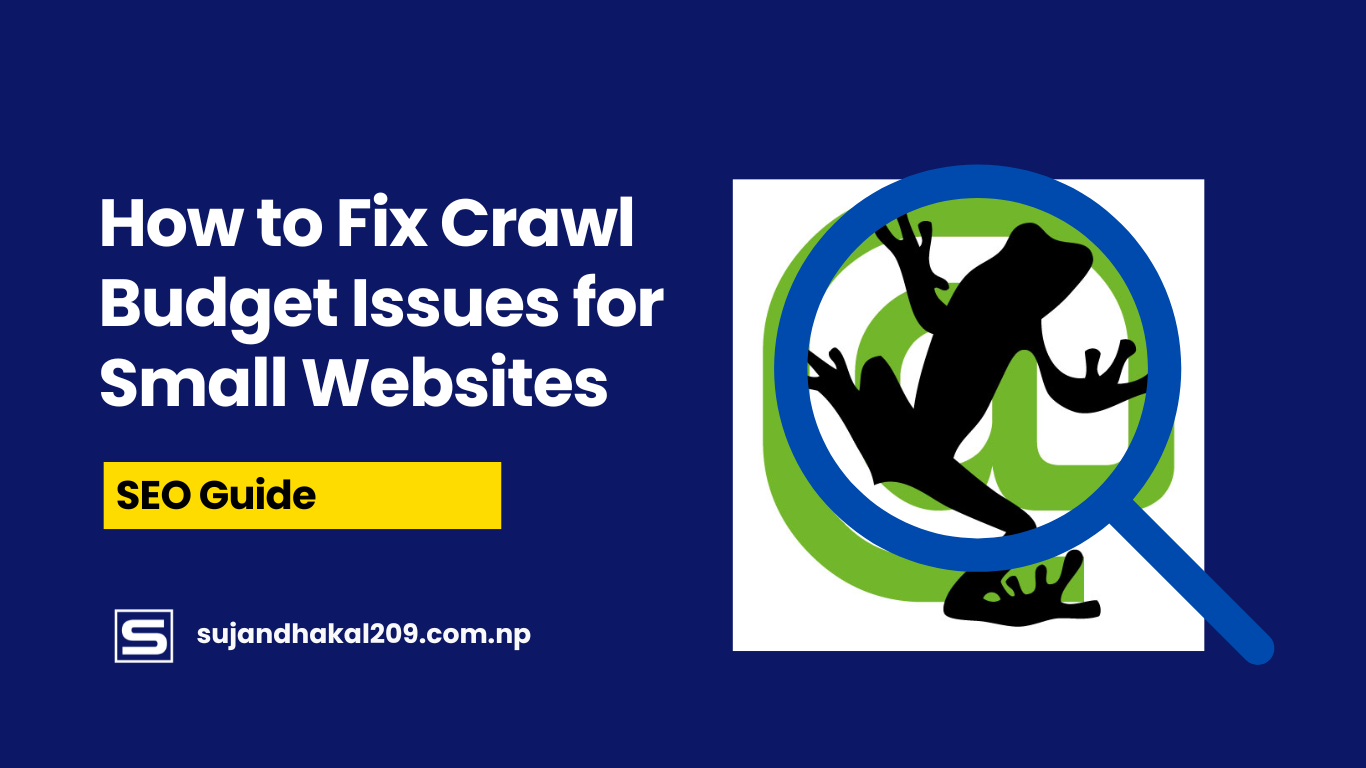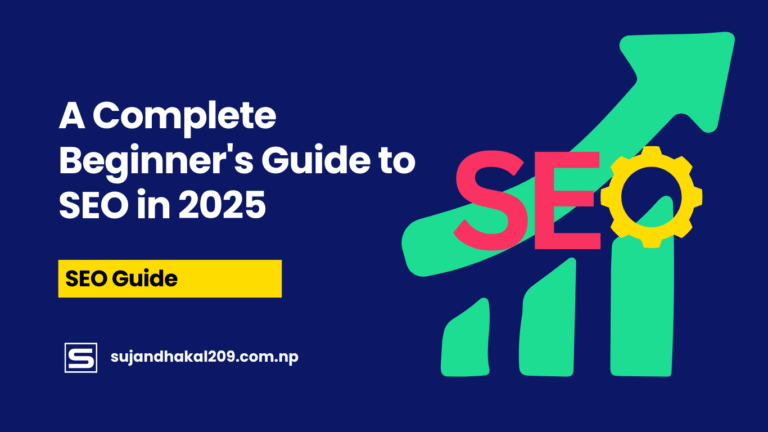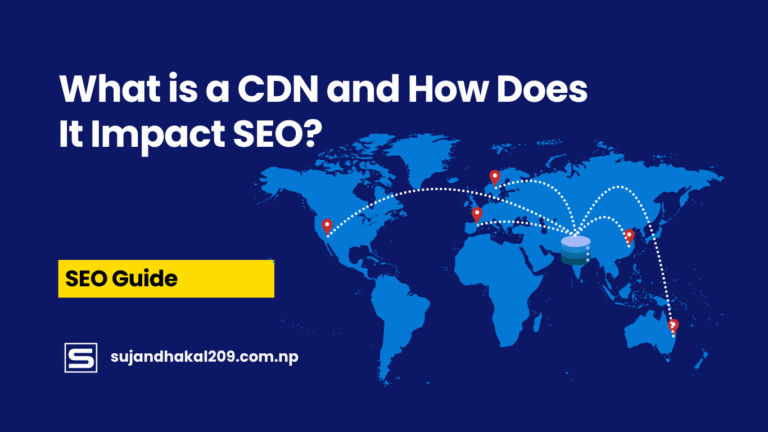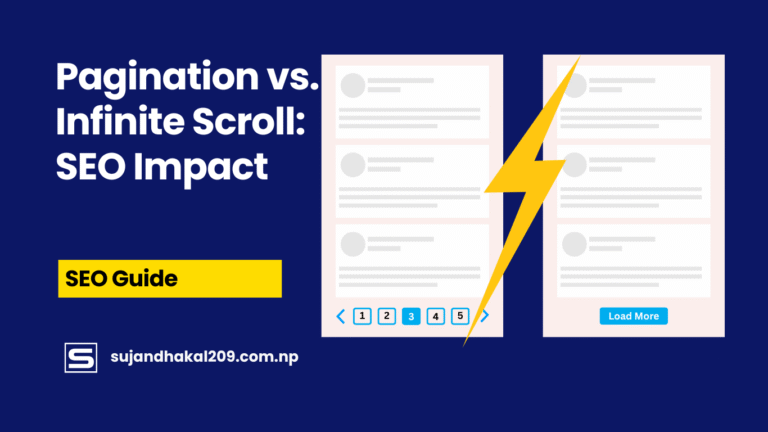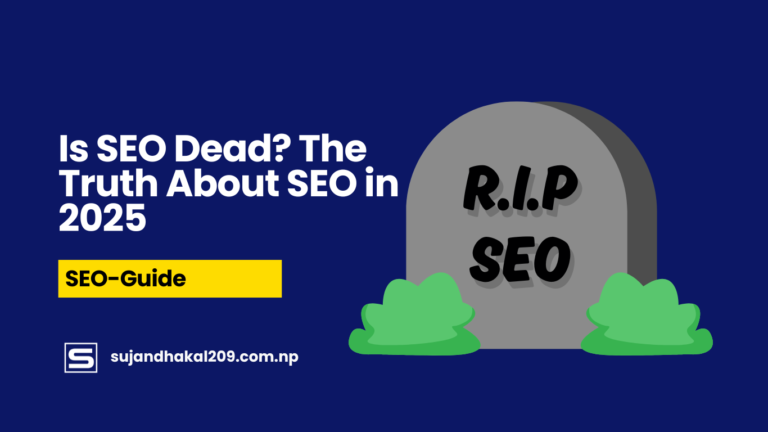Understanding Crawl Budget
What is Crawl Budget?
If you’re scratching your head wondering what crawl budget really means, you’re not alone. Crawl budget is the number of pages Googlebot is willing to crawl on your website within a specific time frame. It’s not a fixed number and can fluctuate based on multiple factors like website health, speed, and structure. For small websites, crawl budget might not seem like a big issue initially—but that’s exactly where problems can creep in unnoticed.
Think of crawl budget like a delivery truck visiting your store. If the truck can only make 10 stops a day and you have 500 items to deliver, some of your important items might never reach your customers on time. Similarly, if Googlebot can’t reach your high-priority pages, they won’t get indexed—and that means no visibility in search results.
Crawl budget isn’t something Google explicitly defines for each website, but it can be inferred through patterns and crawl stats. It’s influenced by how often your site updates, how many errors it has, and how responsive your server is. Ignoring crawl budget can silently kill your organic growth, especially when your most valuable content doesn’t get crawled or indexed.
Why Crawl Budget Matters for Small Websites
Small websites often assume crawl budget is only an issue for giants like Amazon or Wikipedia. But that’s a misconception. Google’s resources are limited, and if your site has a messy structure, slow loading speed, or unnecessary URLs, the bot might skip the good stuff. This is even more problematic when your entire traffic relies on just a few key pages.
Let’s say your blog has only 100 pages, but 40 of them are tag pages, thin content, or old, irrelevant posts. Googlebot might spend more time on those low-priority pages than your fresh, optimized articles. That’s a waste of crawl resources and a missed opportunity.
For small businesses, especially those operating in a competitive niche, every indexed page matters. If Google isn’t crawling your important product or service pages regularly, you’re essentially invisible online. So, managing crawl budget isn’t just a technical SEO trick—it’s critical for growth.
Signs You’re Facing Crawl Budget Problems
Delayed Indexing
Ever published a new page and noticed it’s still not showing up in search results days—or even weeks—later? That’s one of the clearest signs your site may be experiencing crawl budget issues. Googlebot may not be visiting your site often enough, or it’s spending too much time on the wrong pages.
The frustrating part? Even if your page is high-quality and keyword-optimized, it won’t do you any good if it’s not indexed. You can use tools like Google Search Console’s URL Inspection tool to check if a specific page is indexed. If it’s not, and you’ve submitted it for indexing with no results, it’s time to dig into your crawl budget strategy.
Delayed indexing could also be a signal that your overall site health is poor—maybe there are too many redirects, broken links, or unoptimized sitemaps. These all eat into your crawl quota and make it harder for new content to be discovered.
Pages Not Showing Up in Search Results
If important landing pages, blog posts, or category pages aren’t appearing in Google search—even though they’re live and linked properly—it’s more than just an indexing delay. It might mean Googlebot isn’t crawling them at all.
This issue often arises from poor internal linking, blocked resources in robots.txt, or a bloated sitemap that overwhelms the crawler. It can also stem from prioritization issues—Google may not see your pages as valuable because of low engagement metrics or duplicate content concerns.
Another subtle sign? When you search site:yourdomain.com and your newest or most important pages don’t show up anywhere near the top. Google might not consider them important enough to crawl frequently, which often ties back to crawl budget allocation.
Excessive Crawling of Irrelevant Pages
Sometimes Googlebot is crawling—but not the pages you want. If you notice that pagination, tag archives, or outdated content are getting the lion’s share of crawl activity, that’s a problem.
This is a classic crawl waste issue. The crawler is spending its limited time on URLs that don’t contribute to your SEO goals. These could be:
- Filter or sort pages with noindex tags
- Session-based URLs or faceted navigation
- Duplicate content with slightly different parameters
Using log file analysis or Search Console’s crawl stats, you can see exactly what pages Googlebot is hitting. If most of your crawl activity is going to junk pages, you’ve got a crawl budget leak—and it’s time to fix it.
Factors That Affect Crawl Budget
Website Speed
Site speed is a major influencer of crawl budget. Googlebot doesn’t like waiting around. If your server is slow, the crawler will reduce its visits to avoid overloading your site. That means fewer pages crawled and slower indexing.
A fast-loading site, on the other hand, can handle more requests, so Googlebot is more likely to crawl deeper and more frequently. Use tools like Google PageSpeed Insights or GTmetrix to identify bottlenecks. Compress images, enable browser caching, and use a CDN if necessary.
If you’re on shared hosting, consider upgrading. A sluggish server doesn’t just affect users—it directly impacts how often and how well Googlebot interacts with your site.
Server Errors
5xx errors (like 500 or 503) are a huge red flag for Googlebot. If your site frequently returns server errors, Google will start limiting its crawl activity. Why? Because it assumes your server can’t handle the load.
Even a temporary spike in errors can cause long-term crawl budget issues. Google doesn’t forget easily, and it might take a while before it ramps up crawl activity again. Use the Crawl Stats report in Search Console to monitor server response codes and fix recurring issues ASAP.
Also, make sure your site doesn’t unintentionally serve 404s for pages that should exist. Broken internal links and misconfigured redirects can quickly eat into your crawl allowance.
Duplicate Content and Low-Value Pages
Duplicate or near-duplicate content confuses Googlebot. It wastes time deciding which version to index and often ends up ignoring all of them. Common culprits include:
- Print-friendly versions
- URL parameters with the same content
- Copied content across blog tags or categories
Low-value pages are another crawl budget sinkhole. These include thin affiliate pages, doorway pages, or placeholder content. If your site is full of fluff, Googlebot will eventually scale back its activity. Prune or consolidate underperforming pages to keep your crawl budget lean and focused.
How Googlebot Crawls Your Website
Crawl Demand vs. Crawl Capacity
Crawl budget is influenced by two things: crawl demand (how much Google wants to crawl) and crawl capacity (how much your server can handle). Understanding this distinction is key.
- Crawl demand is based on how popular or frequently updated your pages are. High-traffic, frequently refreshed content has higher crawl demand.
- Crawl capacity is technical—it’s how fast and reliably your server can deliver pages without errors.
If your site is slow or throwing server errors, Google will reduce crawl activity even if demand is high. On the flip side, even if your server is blazing fast, Google won’t crawl more unless it sees value in your content.
The sweet spot? High crawl demand and high crawl capacity. That’s when your entire site can be crawled efficiently and frequently.
Crawl Frequency and Priority
Google doesn’t crawl all pages equally. It prioritizes based on perceived value and freshness. Homepages, updated blog posts, and high-authority pages get more frequent visits. Orphan pages, old content, and pages with low engagement might be crawled once in a blue moon—or never.
Use internal linking to signal importance. A page linked from the homepage or main nav is more likely to be crawled regularly. Also, updating your content periodically can signal to Google that the page is still relevant.
Crawl frequency isn’t set in stone—it evolves with your site. Fixing technical issues, improving content quality, and enhancing user experience can all boost your crawl priority over time.
Essential Tools to Diagnose Crawl Budget Issues
Google Search Console
If you’re not already using Google Search Console (GSC), you’re flying blind when it comes to crawl budget management. GSC gives you direct insights from Google itself. It’s like getting a peek behind the curtain to see how Googlebot sees your site.
Start with the Crawl Stats Report. It shows you how often Googlebot visits your site, how many pages it crawls per day, and how much data is downloaded. Look out for patterns—like sudden drops in crawling or spikes in download time—that might indicate problems.
The URL Inspection Tool is another gem. It lets you check if a specific URL is indexed and whether Googlebot had any trouble accessing it. You can also request indexing, but don’t overuse that feature—it’s a short-term fix, not a strategy.
Keep an eye on the Coverage Report, too. It flags errors, warnings, and excluded pages. If you see lots of “Crawled – currently not indexed” entries, you might have a crawl prioritization problem.
Log File Analysis
Log files are the raw data of your website’s interaction with Googlebot. They show every single request made to your server—including the time, the bot’s IP address, and the exact URLs it’s accessing.
Using tools like Screaming Frog Log File Analyzer, JetOctopus, or even a custom script, you can dig into these files and see:
- Which pages are being crawled most
- Which pages are never being crawled
- Whether bots are getting blocked or redirected unnecessarily
This is pure gold for crawl budget optimization. If you find that Googlebot is spending too much time on tag pages, duplicate content, or unnecessary filters, you can take action—like blocking them via robots.txt or using canonical tags.
It’s technical, yes—but it’s the most accurate way to see what’s really going on. No guessing, just data.
Screaming Frog SEO Spider
Screaming Frog is a powerful desktop tool that crawls your entire site like Googlebot does. It reveals issues like:
- Broken links
- Duplicate content
- Redirect chains
- Missing or incorrect meta tags
- Thin or low-word-count pages
When it comes to crawl budget, Screaming Frog helps you clean house. Use it to find all the bloat—pages that shouldn’t exist, don’t offer value, or are blocking more important content from being indexed.
Bonus: you can also simulate how Googlebot sees your site by changing the user-agent settings. It’s perfect for troubleshooting and ensuring your crawl paths are clean and efficient.
Fixing Crawl Budget with Robots.txt and Noindex Tags
Optimizing Your Robots.txt File
The robots.txt file is your website’s gatekeeper. It tells search engine bots which parts of your site they can access and which parts to skip. Get this wrong, and you might be blocking important content—or letting bots waste their time on junk.
Here’s what a well-optimized robots.txt can help you achieve:
- Prevent crawling of admin or login pages
- Block access to parameterized URLs
- Exclude tag or archive pages
- Reduce duplicate content exposure
Example of a smart robots.txt directive:
User-agent: *
Disallow: /wp-admin/
Disallow: /?s=
Disallow: /tag/
This keeps bots away from search result pages, admin sections, and tag archives that typically add no SEO value.
One important tip: Disallowing pages in robots.txt means Google can’t crawl them, but it can still index them if it finds the URL somewhere else. If you want to completely remove them from search results, you’ll also need to use the noindex tag.
Using Noindex Wisely
The noindex meta tag is your best friend for managing crawl efficiency. It tells search engines not to index a particular page, even if they do crawl it. Unlike robots.txt, this allows the crawler to access the page content—but prevents it from appearing in search results.
This is perfect for:
- Duplicate content you can’t remove
- Thin affiliate pages or internal search results
- Seasonal or outdated pages you want to phase out
To use it, simply add this to the <head> of your HTML:
<meta name="robots" content="noindex, follow">
This combo means: “Don’t index this page, but go ahead and follow its links.”
Using noindex strategically helps you clean up your indexed pages and focuses Googlebot’s energy on your best content. Just don’t go overboard—if you noindex too much, you risk devaluing your site’s overall authority.
Managing Crawl Budget Through Internal Linking
Building a Logical Internal Structure
Internal linking is more than just SEO window dressing—it’s a critical signal that helps Googlebot decide what to crawl, how often, and in what order.
Think of your site like a city. Internal links are the roads. If important pages are buried five clicks deep, it’s like putting your most valuable store in an alley with no signage. Googlebot might never find it.
Here’s how to improve crawl efficiency with smart internal linking:
- Link from high-authority pages (like your homepage) to important URLs
- Avoid orphan pages (pages with no internal links pointing to them)
- Use keyword-rich anchor text for context
Also, try using a flat architecture—meaning most pages are only 2-3 clicks away from the homepage. This makes it easier for bots to discover everything quickly.
Avoiding Crawl Loops and Dead Ends
Crawl loops—like circular links or redirect chains—are crawl budget black holes. They can trap bots or waste their time navigating unnecessary paths. Dead ends (pages with no links out) also hurt crawl flow.
Fix these by:
- Running regular crawls with Screaming Frog or Sitebulb
- Creating contextual link paths between related content
- Ensuring every page points somewhere else valuable
Good internal linking is like giving Googlebot a treasure map—make sure the “X” leads to your best content.
Eliminating Duplicate and Low-Value Pages
Consolidating Content with Canonical Tags
Canonical tags are crucial when you have multiple pages with similar content. They tell search engines which version of a page should be treated as the primary one. This helps avoid splitting link equity and keeps your crawl budget tight.
Say you have two product pages with only slight variations—like color or size—but mostly identical descriptions. Use the canonical tag to point both back to the main version:
<link rel="canonical" href="https://example.com/product-main-page/" />
Now, Google knows to focus on that one page instead of wasting crawl resources on duplicates.
Pruning Thin Content
Pages with very little useful content—like 50-word blurbs, auto-generated pages, or empty categories—can hurt your crawl budget and your site’s reputation. Google sees them as low-quality and might assume the rest of your site isn’t worth crawling deeply.
How to deal with them:
- Combine similar pages into long-form content
- Delete and redirect underperforming pages
- Use “noindex” on pages that serve a function but not SEO value
Less is more when it comes to indexing. Focus on high-value, informative, and well-linked pages. Clean out the dead weight, and Googlebot will start crawling your site more intelligently.
Submitting and Optimizing Your XML Sitemap
Creating a Clean and Focused Sitemap
An XML sitemap is like a roadmap for Googlebot—it shows exactly which pages you want crawled and indexed. But here’s the catch: most small websites either neglect this entirely or clutter it with irrelevant pages.
A good sitemap should:
- Include only index-worthy pages (no
noindex, no 404s) - Be updated regularly to reflect site changes
- Be under 50,000 URLs or 50MB in size (Google’s limit)
- Be split into multiple sitemaps if you have distinct content types (e.g., blog, products, categories)
Pro tip: Submit your sitemap in Google Search Console under “Sitemaps” and monitor its indexing rate. If Google is only indexing 60% of what’s in your sitemap, that’s a signal something’s off with crawl prioritization or content quality.
Avoid listing every possible tag, filter, or archive. Keep your sitemap lean, mean, and laser-focused on the pages that actually matter.
Prioritizing Pages with <priority> and <lastmod>
Though not mandatory, these XML sitemap tags can guide Googlebot in making crawl decisions.
<priority>helps indicate the relative importance of pages.<lastmod>shows when a page was last updated.
Example:
<url>
<loc>https://example.com/blog/seo-tips</loc>
<lastmod>2025-04-10</lastmod>
<priority>0.9</priority>
</url>
While Google claims not to rely heavily on these, they still contribute to crawl signals when paired with good internal linking and site structure.
In summary: treat your sitemap like a VIP guest list—only include the people (pages) you really want to show up to the party (Google’s crawl queue).
Controlling Crawl Frequency with Search Console Settings
Setting Crawl Rate Limits
Google Search Console offers a crawl rate setting—but only for some websites, typically larger ones or those experiencing server strain due to crawling.
If available, it allows you to slow down the crawl rate manually. This is helpful if:
- Your shared hosting is crashing during crawls
- You’ve launched a new site and want to control crawling
- You’re running seasonal promotions and want minimal bot interference
However, use this with caution. Slowing crawl rate too much can result in longer indexing times and missed updates.
If your site doesn’t show this setting, that’s okay. Focus on fixing crawl waste, improving speed, and building internal links—that’s what really boosts crawl frequency naturally.
Requesting Indexing Smartly
Google removed the bulk URL submit feature, but the URL Inspection Tool still lets you request indexing one page at a time. Don’t abuse this—it’s meant for urgent, high-priority content like:
- New product launches
- Time-sensitive announcements
- Major page updates
Using this tool strategically can speed up indexing for important URLs. But again, if your crawl budget is being spent wisely, you’ll rarely need to do this.
Let your content and structure do the heavy lifting. Indexing requests are like asking for special favors—save them for when it truly counts.
Using Pagination and Faceted Navigation Wisely
Managing Pagination for Better Crawling
Pagination (like blog page 1, 2, 3…) helps break up large lists into manageable pieces. But if not handled well, it can lead to crawl bloat. Google might spend too much time crawling page 100 of your blog archive instead of your new posts.
Here’s how to manage it properly:
- Use rel=”next” and rel=”prev” tags (even though Google says they’re no longer used, some bots still rely on them)
- Internally link from paginated pages back to cornerstone or trending posts
- Avoid linking paginated pages in your main navigation
Also, make sure important content isn’t buried deep in pagination. If Googlebot has to go 10 pages deep to find your new article, it probably won’t bother.
Controlling Crawl on Filtered URLs
Faceted navigation—like filters for color, size, or price—is great for UX but a nightmare for crawl budget. Each filter can generate a new URL, creating thousands of crawlable pages that offer no unique value.
Fix this by:
- Using
noindexorcanonicalon filtered pages - Blocking them in
robots.txtusing patterns like:Disallow: /*?color= Disallow: /*?size= - Setting parameter handling rules in Google Search Console
Faceted navigation is one of the biggest sources of crawl budget waste. Lock it down tight, or risk drowning your site in near-duplicate, low-priority URLs.
Prioritizing Mobile-First Crawling
Mobile Performance Matters More Than Ever
Google uses mobile-first indexing, which means it predominantly uses the mobile version of your site to crawl and index content. If your mobile version is slow, broken, or missing key content, your crawl budget is taking a hit.
Make sure your mobile site:
- Loads in under 3 seconds
- Uses responsive design (not separate m-dot URLs)
- Includes the same content and metadata as your desktop version
- Doesn’t hide key links or content behind expandable menus
Tools like Google’s Mobile-Friendly Test and PageSpeed Insights can show you how your mobile site stacks up.
Bonus: faster mobile = better user experience = lower bounce rate = stronger SEO signals = better crawl frequency. It’s all connected.
Monitoring and Iterating for Long-Term Crawl Health
Keep Testing, Tracking, and Tweaking
Crawl budget optimization isn’t a one-and-done deal. It’s an ongoing process that evolves as your site grows.
Here’s your long-term game plan:
- Run monthly technical audits using tools like Screaming Frog or Ahrefs
- Review GSC Crawl Stats and Coverage reports regularly
- Prune or update old content every quarter
- Fix broken links and redirects quickly
- Reevaluate sitemaps and robots.txt as your structure changes
Treat your website like a garden. If you don’t pull the weeds (crawl waste), fertilize the soil (optimize speed and structure), and prune the dead branches (low-value pages), your best content won’t get the light it needs to grow.
Conclusion
Fixing crawl budget issues for small websites isn’t just about pleasing Google—it’s about making your content discoverable, indexable, and valuable. Every small site has a finite shot at grabbing attention in a sea of digital noise. If Googlebot isn’t crawling and indexing your best stuff, you’re wasting potential.
Start with a clean technical foundation: fast site, solid structure, and zero crawl waste. Use the tools available—Search Console, log analysis, Screaming Frog—to shine a light on hidden problems. Be proactive with pruning, optimizing, and guiding Google to what matters most.
Because in SEO, visibility isn’t earned by chance—it’s engineered by strategy.
FAQs
1. How do I check if my site has a crawl budget problem?
Use Google Search Console’s Crawl Stats and URL Inspection tools. Look for delayed indexing, low crawl rates, or excessive crawling of low-priority pages.
2. Does adding more pages help improve my crawl budget?
Not necessarily. Quality matters more than quantity. Too many low-value pages can actually hurt your crawl efficiency.
3. Should I block all low-value pages in robots.txt?
Not always. Consider using noindex instead if you still want Googlebot to access the page but not index it. Use robots.txt for truly unnecessary sections like login or search results.
4. Can duplicate content lower my crawl budget?
Yes. Duplicate or near-duplicate pages can confuse Googlebot and waste crawl resources. Use canonical tags and consolidate content to fix it.
5. How often should I update my sitemap?
Every time you publish, update, or delete significant content. Dynamic sitemaps that auto-update are ideal for staying crawl-efficient.

